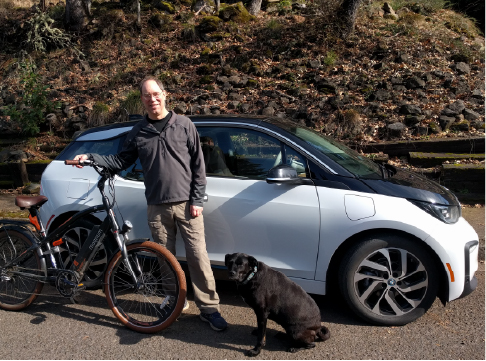Related News
Related News
-
EWEB reaffirms commitment to resilience with Wildfire Mitigation Plan approval
The utility is testing new equipment, leveraging technology, and incorporating third-party expertise to bolster electric system resiliency to a range of threats, including wildfire.
Find Out More -
Vote now for the winner of the 2025 Greenpower Grant
Get ready to cast your vote for the winner of the 2025 Greenpower Grant. EWEB is excited to announce the eligible candidates for this year's grant award! The winner of the Greenpower Grant will be voted on by Greenpower subscribers. Learn more about each origanization and their proposal before casting your vote.
Find Out More -
How EWEB’s Fleet Services reached 200,000 hours without a lost time injury
EWEB’s Fleet Services team reached a major safety milestone: 200,000 work hours without a workplace injury that results in an employee losing at least one full day of work.
Find Out More -
EWEB cuts greenhouse gas emissions from operations 55% since 2010
Switching to renewable fuels in EWEB’s fleet operations has played a key role in reducing the utility's greenhouse gas emissions.
Find Out More -
Energy conservation could offset large portion of growth in power demand
Preliminary results of an EWEB study indicate that cutting back demand can contribute to maintaining a reliable, affordable energy supply.
Find Out More -
Groups suing EWEB will burden customers with litigation-driven costs
EWEB expresses disappointment that groups choose court over collaboration and firmly disputes the claims made in the lawsuit relating to operation of the utility’s Carmen-Smith Hydroelectric Project nearly 70 miles east of Eugene. EWEB takes its environmental and public safety responsibilities seriously. Contrary to the assertions in the lawsuit, construction of fish passage was postponed because EWEB’s regulator, the Federal Energy Regulatory Commission (FERC), required the utility to study and resolve urgent dam safety issues first.
Find Out More -
Small number of McKenzie Valley EWEB customers face higher February bills due to estimated reads
EWEB under-estimated energy usage for about one-fifth of upriver customers in December or January, resulting in higher true-up bills in February.
Find Out More -
EWEB offers Greenpower Grant to support local sustainability project
The Greenpower Grant, funded by voluntary customer subscriptions to Greenpower, not customer grants, supports projects that advance renewable energy, clean energy education or efforts to reduce or offset local carbon emissions.
Find Out More -
EWEB and BRING cook up new ways to help Eugene businesses save energy
Businesses can cut energy costs with EWEB’s free Energy Assessments and efficiency programs. Plus, for a limited time, BRING is offering $1,000 rebates for qualifying upgrades—apply by Feb. 28!
Find Out More -
Eugene residents share energy and water saving tips
From blocking a draft to replacing your heating system, each action you take can save water and electricity.
Find Out More -
EWEB customers and employees share the love through Energy Share donations
EWEB budgets funding to help customers struggling to pay their utility bill, but the need is always greater than what we can provide alone. Energy Share, our customer donation funded program helps fill the gap.
Find Out More -
EWEB leverages Oregon Clean Fuels Program to support electric mobility
Five grants support programs benefiting homeless youth and bike sharing, among others.
Find Out More -
Frigid weather drives highest energy demand of the winter so far
Peak electricity demand this season surpasses demand levels during last year’s ice storm.
Find Out More -
Cold Weather, Higher Energy Bills: Why It Happens
Eugene is experiencing some of the coldest temperatures we've seen this winter. When temperatures drop into the 20s, heating systems must work much harder to keep homes warm. Even if you leave your thermostat untouched, your heating system will consume more energy to maintain a steady indoor temperature as the outdoor temperature plummets.
Find Out More -
EWEB awarded $1 million for wildfire resiliency projects from Federal funding package
Funds will be used to support fuels reduction work on a landscape scale in high-risk areas in the McKenzie River Valley and Eugene South Hills.
Find Out More - Show More
My EV Story: Charlie's BMW i3
April 23, 2020

Intrigued by the possibility of saving money on vehicle fuel and maintenance with an electric vehicle (EV), our family leased a Chevrolet Spark EV in 2016. This car has an 80-mile range, which was fairly typical for an EV in 2016, and we intended it as the in-town commuter vehicle while we continued using a gas-powered companion for long-distance travel.
"Sparky" exceeded our expectations.
As a long-time purchaser of inexpensive vehicles with 4-cylinder engines, I was surprised to find, for the first time, that I owned a car that was fun to drive. I don't generally drive for fun, but the "zippiness" of the Spark EV, thanks to the innate characteristics of EV engines and drive trains, provided an unexpected amount of satisfaction.
When the lease ended, we reluctantly surrendered Sparky and initially considered upgrading to the vehicle that replaced it in Chevrolet's electric line-up, the Bolt. After our successful experiment with the electric Spark, we were ready to invest in an EV that could be used for everything: long-distance trips as well as the in-town commute.
The Bolt seemed to be a fine car, but we just weren't as comfortable in the seats as we had been in the Spark, and I was still somewhat nervous about recharging when traveling.
We settled on the BMW i3 with a range extender. The "range extender" is a very small gas engine that provides an extra 50-70 miles of travel if you need it. The rated all-electric range of the i3 is 153 miles, which is less than many 2019 EVs, but I liked the security of knowing I could always keep going with a stop at a traditional gas pump.
After our first 2,500 miles of use, we have put 1.8 gallons of gas in the tank and even that was mostly avoidable. The range extender primarily functions as a security blanket.
Leasing vs. buying
For both cars, we chose to lease for three years rather than making an outright purchase. While there are many factors in that decision, part of our thinking is that we want to take advantage of the rapidly increasing range of newer vehicles. Because of advantageous leasing terms, the i3 was actually less expensive to lease than several EVs that have lower sticker prices.
The new commuter vehicle
A bit before acquiring the BMW i3, the family also became a one-car household. Like many families, we always kept two cars, one for each adult. But in 2019 we acquired our first electric bicycle, a Magnum Cruiser. It turned out that with an electric bike for commuting we no longer needed two cars.
While an EV saves money on fuel and maintenance, those savings pale in comparison to the financial benefit of substituting the acquisition cost of an electric bike for that of a car. And no car insurance!

